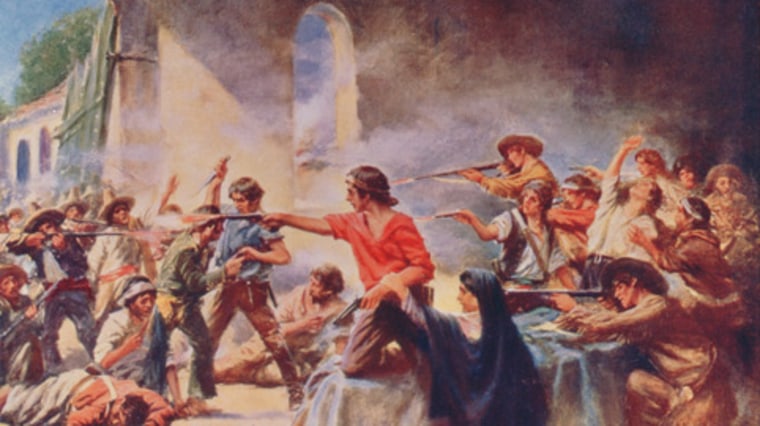Soon after Texas won independence from Mexico in 1836, the state legalized slavery. Free blacks and mulattoes were forbidden from entering Texas, which had once been a safe haven for runaways. In the 1830s, as the westward push of white settlements and of slavery brought significant numbers of new settlers into the region, conflicts between whites and Mexicans, who had long occupied the land, increased. In Texas, authorities used the Texas Rangers to protect the large land and cattle operations established after statehood from insurgents like Juan Cortina, a wealthy Mexican-born rancher who became a symbol of militant resistance to Anglo racism. Authorities in Texas systematically disenfranchised Mexican Americans, and prevented them from serving in local government, while vigilantes, with broad support from the white communities, terrorized Mexican Americans in southern Texas, where they were most numerous. Statehood was delayed for New Mexico, primarily because of its Mexican American political leadership, however Mexican Americans remained the majority population until the end of the nineteenth century.
The war with Mexico also affected the political balance between pro- and anti-slavery states. If slavery was allowed in the newly acquired Mexican territory, slaveholding states would acquire greater representation in Congress. Even with a much smaller population, the South sent and suffered greater casualties in the Mexican War than the North, which had disapproved of the effort and sent less than half as many troops. Not surprisingly, southerners felt the Wilmot Proviso, a proposal by a Pennsylvanian legislator to ban slavery in all territory acquired as a result of the Mexican War, was unjust, since the South had risked more lives to win the Southwest.
In 1829, Mexico abolished slavery and became a refuge for runaways.
In 1839, Africans aboard the Spanish slave ship Amistad mutinied. When the ship landed off the coast of Long Island, they pleaded for freedom in the courts. Two years later, in 1841, the U.S. Supreme Court declared the Amistad slaves free.
In 1840, South Carolina enacted a “black code,” in which slaves were denied basic rights, such as the freedom to assemble, produce food, earn money, learn to read or possess anything other than low-quality clothing.
In 1848, the Treaty of Guadalupe Hidalgo ended the Mexican American War, ceding large portions of what are now Colorado, Arizona, New Mexico, Wyoming, California, Nevada and Utah to the U.S. in return for $15 million and relief from debt. The treaty was supposed to protect the existing civil rights and land claims of Mexican citizens and provide full American citizenship to those who stayed in the newly ceded territories. However, the U.S. Senate’s ratification of the treaty deleted the guaranteed land rights and citizenship.
The 1850 census was the first to distinguish between native and non-native born Americans. New York City was more than half foreign born; high proportions of foreign born were found in Chicago, Milwaukee, Detroit, St. Louis, and New Orleans. Political forces in the U.S. were strongly anti-immigration, but economic concerns prevailed and immigration continued. Anti-immigration forces created internal barriers by differentially granting civil rights, and used the census for this purpose.
By the mid-1800s Chinese immigrants came to the West Coast, drawn to railroad and mine work.
